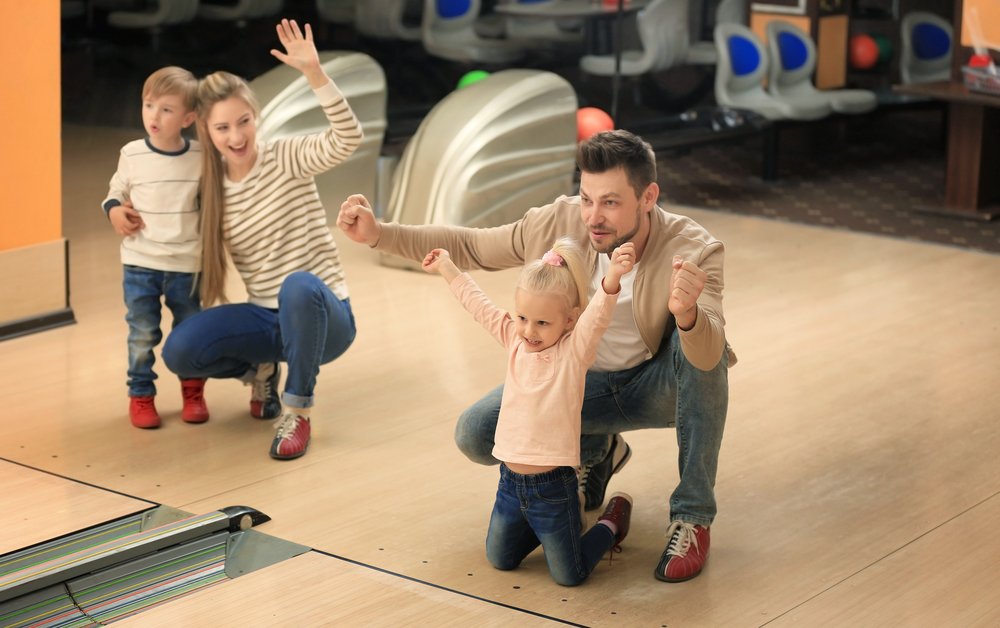
Bowler's come in all shapes and sizes. Some are just starting out in the sport, while others have been at it for years. But at what age can a child start bowling? And what kind of equipment do they need?
The good news is that just about any age is a good time to start bowling, and children can quickly learn the basics of the game. However, there are a few things to keep in mind when getting started. One of them is that not all bowling alleys will allow minors.
Read on for some tips on how to get your child started in this popular sport.
Contents
- 1 At What Age Can a Child Start Bowling?
- 2 Is Bowling Good for Children?
- 3 Why Should You Take Your Toddler Bowling?
- 4 Do Bowling Alleys Have Bowling Balls for Toddlers?
- 5 How Do You Make Bowling Fun for Kids?
- 6 What Are the Health Benefits of Bowling on Kids?
- 7 Should I Allow My Kids to Bowl at Home?
- 8 What Bowling Equipment Do Children Need?
- 9 Bowling Afterschool Programs
- 9.1 Can a 2-Year-Old Bowl?
- 9.2 How Much Does It Cost to Get a Bowling Ball Drilled?
- 9.3 How Much Is a Bowling Ball for Kids?
- 9.4 Are There Custom Bowling Balls for Kids?
- 9.5 Is Bowling Suitable for 3-Year-Olds?
- 9.6 How Do You Play Bowling With a Toddler?
- 9.7 What Is the Youngest Age for Ten-Pin Bowling?
- 9.8 Is Bowling a Good Sport for Kids?
- 10 Related Articles
At What Age Can a Child Start Bowling?
Bowling is a great activity for kids of all ages. It helps to improve hand-eye coordination, and it’s also a fun way to socialize with friends. These alleys have child-friendly bowling lanes and equipment.
Most bowling alleys require children to be at least nine years old for them to start bowling, so be sure to check with your local alley before you go.
Is Bowling Good for Children?
Bowling is a popular pastime for people of all ages, but is it good for children? It can help children to develop fine motor skills and hand-eye coordination. It also teaches them patience and focus as they learn to control the ball and aim for the pins.
In addition, bowling is a social activity that fosters teamwork and sportsmanship. Children who bowl with friends or family members can learn how to cooperate and work together towards a common goal.
So next time you're looking for something fun to do with the kids, head to the nearest bowling alley. You'll be sure to have a good time while helping them to develop important life skills.
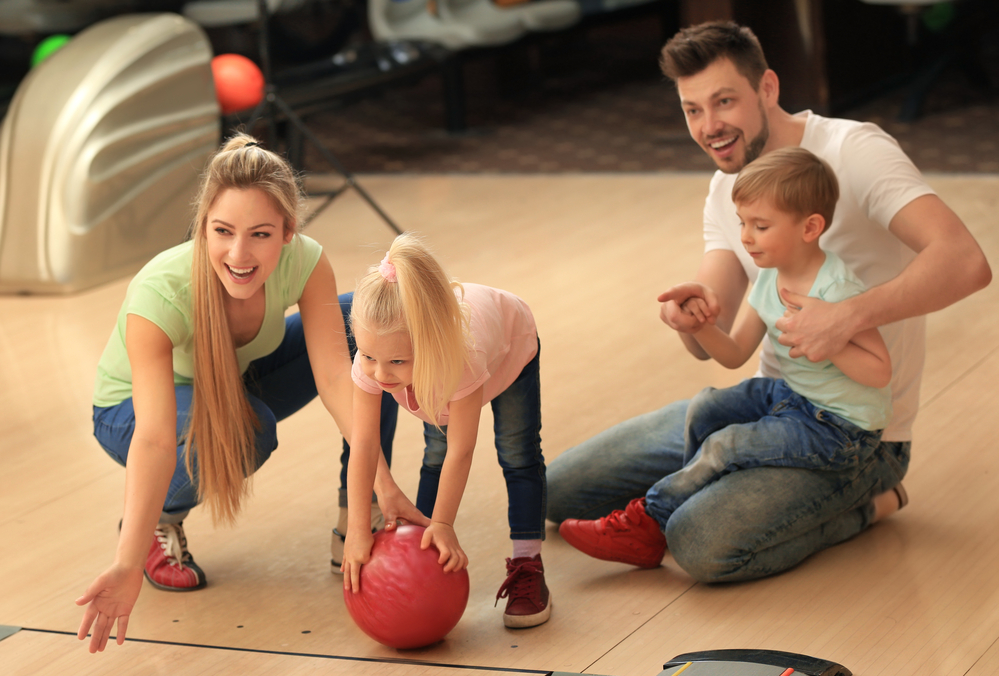
Why Should You Take Your Toddler Bowling?
When most people think of bowling, they picture a group of friends or co-workers hanging out and enjoying some friendly competition. However, bowling can also be a great activity for families with young children.
Here are a few reasons why you should take your toddler bowling:
- It’s a great way to bond: Bowling is a great opportunity to spend some quality time with your child. It’s also a chance to teach them some important life skills, such as how to take turns and follow rules.
- It’s active and interactive: Bowling is a physical activity that gets kids moving, and it’s also interactive, as they need to pay attention and aim carefully.
- Bowling is affordable: Bowling is relatively inexpensive, especially if you go during off-peak hours. And many bowling alleys offer discounts for families or Children’s Leagues.
- It’s a great way to burn off some extra energy.
- It's educational: It’s a fun way to introduce your child to numbers and counting.
- Bowling is a fun social activity that the whole family can enjoy.
- Bowling can help improve your child’s hand-eye coordination.

Do Bowling Alleys Have Bowling Balls for Toddlers?
Most bowling alleys have at least a few bowling light weight bowling balls that are specifically designed for toddlers. These balls are typically much smaller than standard bowling balls, and they often have closed finger holes to accommodate small hands.
These balls are usually made of soft materials such as plastic or rubber, which helps to prevent injuries if a child happens to drop the ball. While some bowling alleys allow toddlers to use standard balls with smaller finger holes, others require that children use special balls designed for their safety.
Either way, it is important to ask about the policy before renting a lane. Toddler-sized bowling balls can help to make the sport more enjoyable for younger children, and it can also help to prevent accidents. Be sure to check behind the counter and ask if they have smaller sized/weighted toddler balls.
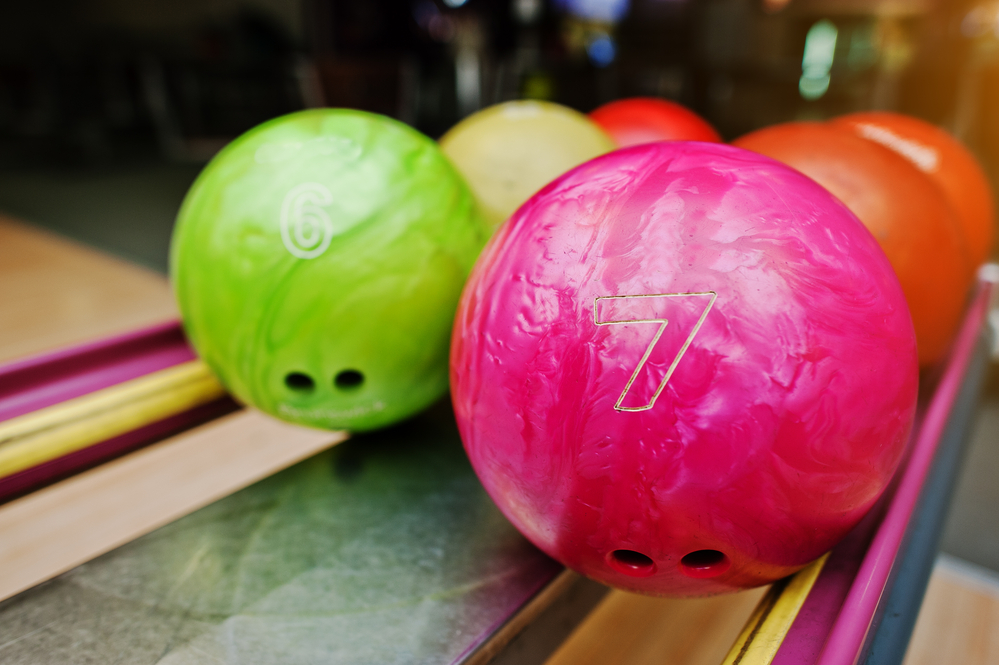
How Do You Make Bowling Fun for Kids?
Many children enjoy bowling, but some find it to be a bit boring. If your child is struggling to have fun while bowling, there are a few things you can do to help.
- Make sure they are using the right equipment. Child (weight) sized balls and smaller lanes can go a long way in making the game more enjoyable.
- You can also try incorporating games into your bowling session. For example, you can bowl with only three pins or set up an obstacle course for the ball to roll through.
- Put up some targets. One way to make bowling more challenging and fun for kids is to set up targets around the lane. This will help them to focus and improve their aim. You can use bottles, cans, or even old socks filled with rice as targets.
- Have a contest. Bowling can be more fun when there’s something on the line. See who can get the most strikes, the most gutter balls, or even who can score the highest score. Offer a prize for the winner to really up the attention.
- Take them to cosmic bowling and make it glow in the dark. Most bowling alleys have black lights, so take advantage of them! Wear white shirts and add some glow-in-the-dark accessories to really make it fun.
- Add some music.
By making a few simple adjustments, you can help your child have a more enjoyable bowling experience.

What Are the Health Benefits of Bowling on Kids?
While many people think of bowling as a simple game, it can actually provide a number of health benefits for kids. For starters, bowling is a great way to get some exercise. Walking to the lane and carrying the ball can help to get kids' heart rates up, and the act of throwing the ball is a good way to build muscles.
In addition, bowling can help to improve hand-eye coordination. Kids need to be able to judge the distances and angles in order to get the ball where they want it to go. As a result, bowling can help to develop important motor skills. Bowling can help improve balance and coordination.
Because bowling requires kids to stand and throw the ball, it can help them improve their balance and coordination. This is especially beneficial for kids who are clumsy or have trouble with coordination. Bowling can help burn calories.
Although it may not seem like it, bowling can actually be a great way for kids to burn calories and stay active. One game of bowling can burn up to 100 calories, so it’s a great way to work out.
Finally, bowling is a great way for kids to socialize. Playing with friends or family members can help kids to develop communication and teamwork skills. In other words, bowling is more than just a game - it's a chance for kids to grow and learn.
Should I Allow My Kids to Bowl at Home?
Kids love bowling, there's no doubt about it. They love the feeling of rolling a heavy ball down the lane and watching as the pins come crashing down. Unfortunately, bowling alley fees can add up quickly, making it difficult for families to enjoy this activity on a regular basis.
So, what's a bowling-loving parent to do? Many parents choose to set up a mini bowling lane in their homes. This can be a great way for kids to practice their skills and have fun without spending a lot of money.
Of course, there are some safety concerns to consider before setting up a home bowling lane. Make sure that the area is well-lit and free of obstacles that could cause trips and falls. If you have small children, you may want to consider using plastic pins instead of the traditional wooden ones.
It is also important to use bowling bumpers. They help to keep the bowling ball on the lane. Second, they help to prevent gutter balls.
To add, they provide a barrier for small children and beginners who might otherwise roll their ball into the gutters, thus helping them increase their score by ensuring that the ball stays on the lane and doesn’t go down any gutters.
With a little care and planning, setting up a home bowling lane can be a great way for your family to enjoy this classic game.
What Bowling Equipment Do Children Need?
If you're looking for a fun and active sport that the whole family can enjoy, look no further than bowling. Bowling is a great way to spend some quality time with your kids while getting a little exercise. And with a few simple pieces of equipment, you can set up your own bowling alley right in your own backyard.
Here are five pieces of bowling equipment for kids that you'll need to get started:
- Bowling balls for kids: Of course, you’ll need bowling balls. If you don’t have any spare balls lying around the house, you can usually find them at your local sporting goods store. Just make sure to get balls that are the right size for your child’s hand. Kids’ bowling balls are typically smaller and lighter than adult balls, making them easier to control. Many balls also have fun designs or colors that kids will love.
- Bowling shoes for kids: These special bowling shoes have soles that are designed to grip the bowling lane, providing better traction and accuracy. Most bowling centers rent shoes, but if your child is serious about the game, it’s worth investing in a pair of their own.
- A bowling bag for kids: This is a must-have for transporting all of your child’s bowling equipment. Look for a bag with separate compartments for each item and a shoulder strap for easy carrying.
- A wrist guard: This helpful accessory helps to prevent painful wrist injuries by absorbing some of the shock when the ball hits the pins. Wrist guards are especially important for beginners who are still learning proper form.
- A towel: A towel is useful for wiping up spills and sweat from the bowling lane, as well as for drying off the hands.
Bowling Afterschool Programs
In many schools across the country, bowling is becoming a popular activity for children to learn. Bowling is a low-impact sport that requires both physical and mental focus, making it a great option for kids who may not be interested in traditional team sports.
School programs that offer bowling as an extracurricular activity or as part of physical education classes provide children with the opportunity to learn a new skill while also improving their overall health and wellness.

Can a 2-Year-Old Bowl?

Yes, they can. Many children take their first steps around the same time they learn to bowl. In fact, most 2-year-olds are physically capable of bowling but will require a ball ramp to avoid running and slipping on the lane. Ramps will also help them not to cross the foul line.
How Much Does It Cost to Get a Bowling Ball Drilled?

Expect to pay between $20 and $50 for basic drilling. Performance drilling can cost more. Once you have selected a ball, you will need to have it drilled so that it fits snugly in your hand.
The cost of this service will vary depending on the shop you visit and the complexity of the drilling pattern. If you want a more complicated design or if you need additional services such as grip installation, then the price will be higher.
How Much Is a Bowling Ball for Kids?
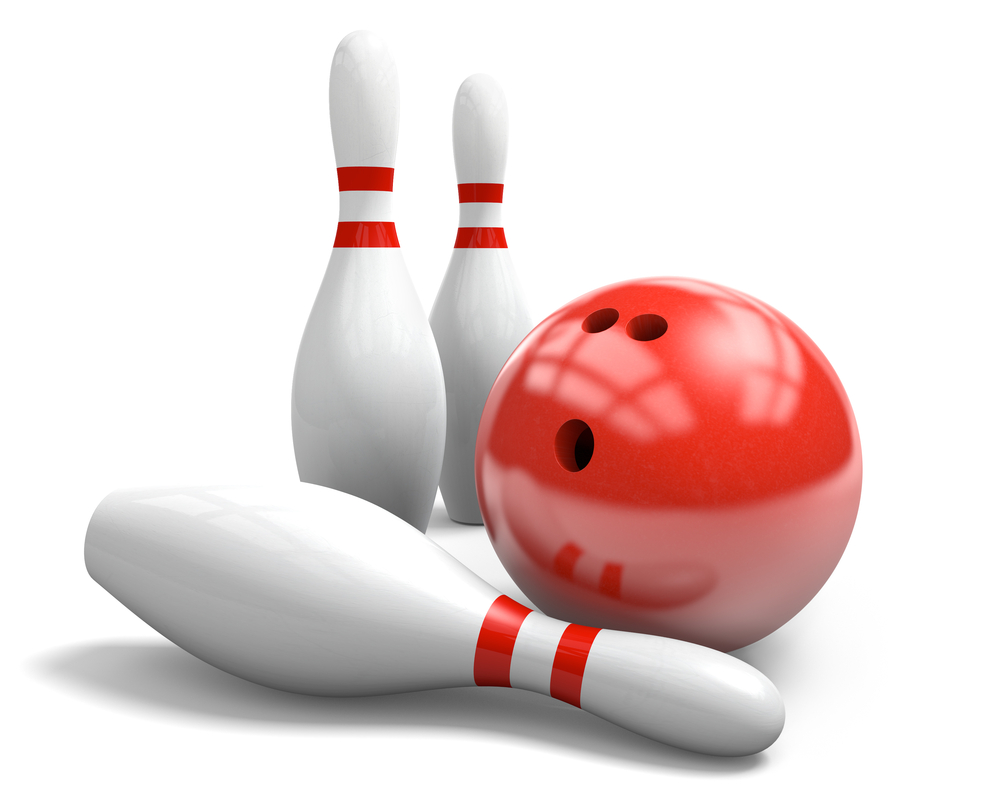
A basic plastic ball for a small child might cost as little as $10, and for an older child or teenager could cost upwards of $50. When it comes to bowling, having the right equipment is key to success.
This is especially true for kids, who often need smaller, lighter balls that are easy to throw. The answer depends on a few factors, including the child's age, size, and skill level.
Are There Custom Bowling Balls for Kids?
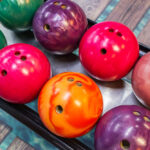
Yes, there are custom bowling balls for kids. There are companies that specialize in making bowling balls specifically for children.
These companies usually have a variety of designs and colors to choose from so you can find the perfect ball for your child. Custom bowling balls for kids typically weigh between five and eight pounds, which is the perfect weight for most children.
Is Bowling Suitable for 3-Year-Olds?
Yes, bowling can be suitable for 3-year-olds. Bowling alleys often provide lightweight balls and bowling ramps to make the game accessible and safe for young children.
Parents should supervise their children to ensure safety and help them learn the basics of the game. It's an excellent opportunity for kids to develop their motor skills and have fun at the same time.
How Do You Play Bowling With a Toddler?
Using lightweight bowling balls and ball ramps can be beneficial when bowling with a toddler. The ramps assist toddlers in rolling the ball down the lane without lifting or throwing. Bumpers can also prevent balls from entering the gutters, making the game more enjoyable for little ones. Always supervise toddlers to ensure their safety and help guide their play.
What Is the Youngest Age for Ten-Pin Bowling?
There isn't a strict minimum age for ten-pin bowling, but most bowling alleys require children to be at least nine years old. However, some alleys are equipped to accommodate younger children, even toddlers, with appropriate safety equipment and lightweight balls. Parents should check the specific policies of their local bowling centers.
Is Bowling a Good Sport for Kids?
Bowling is a beneficial sport for kids. It helps in developing fine motor skills and hand-eye coordination. Additionally, it fosters social skills, teamwork, and sportsmanship, as children can bowl with friends or family members. Bowling is also an active, engaging physical activity that offers a fun and interactive way to exercise and burn off energy.
Related Articles
Bowling is a popular sport enjoyed by people of all ages. In fact, there are bowling alleys that cater to children as young as 3 to 9 years old.
This could also depend on several factors, including:
Body Position and Arm Motion: When it comes to youngsters learning how to bowl, one of the most important things for them to understand is proper body position and arm motion. This involves getting into a comfortable stance with their weight evenly distributed on both feet before starting their approach to the lane.
As far as arm motion goes, they should keep their elbows close to their sides and use a gentle back-and-forth swinging action when releasing the ball.
Kira Byrd, a Certified Fraud Examiner, holds a B.S. in Accounting from the University of Alabama at Birmingham. With a passion for bowling from her childhood, Kira has poured her expertise and personal experiences into creating and nurturing Bowling For Beginners. Kira's mission is to meet new bowlers where they are and guide them toward consistently achieving higher scores. With a focus on skill development and strategic techniques, she empowers readers to take control of their game and unlock their true potential.
Bowling For Beginners embodies strict editorial integrity, ensuring reliable and unbiased information. Kira's commitment to delivering valuable insights and practical strategies is reflected in every article. Here's an explanation of our editorial policy and how we get money.





